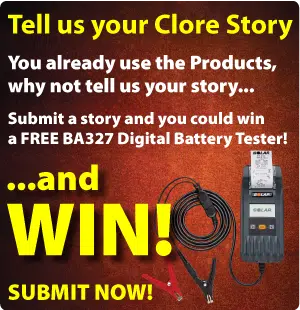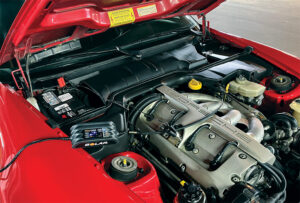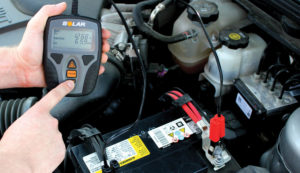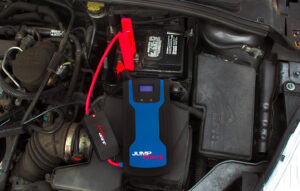We have written about the AGM battery on several previous occasions, first introducing it to our audience when very few new vehicles were equipped with them, then addressing some of the unique service aspects of the AGM battery versus the traditional flooded lead acid battery. In the time we have been writing this blog, the AGM battery has significantly increased in popularity, including in new vehicle installations, vehicle replacement battery applications and non-vehicle installations. In fact, the global market for AGM batteries exceeded $10B in 2020 and is expected to grow to nearly $15B by 2027 (marketstudyreport.com). So, understanding how to diagnose and service this versatile battery type is increasing important for technicians, repair shops, vehicle owners and anyone who has AGM batteries installed in their equipment.
Why Has the AGM Battery Become So Popular?
Several market forces have combined to drive the growth of AGM battery usage, but in our opinion, the key aspect driving AGM growth is the ability of AGM batteries to better handle deep discharge applications and sustain their performance over time in these applications. This includes the usage of AGM batteries in the vast majority of vehicle Stop-Start applications in the North American carpark. Stop-Start operation results in deeper discharge of the vehicle’s battery(ies) – some systems use a multi-battery configuration – than does a traditional electrical system design. As a result, many OEs have chosen to install AGM batteries into their Stop-Start system configurations to withstand the stress caused by the repeated starting and periods of battery only system support during stops that are characteristic of the systems. In addition, the ability to handle deep discharge conditions makes the AGM battery great for a variety of other applications, such as marine, RV, powersport, racing and backup power applications.
What Makes the AGM Battery Different?
The term AGM stands for Absorbent Glass Mat. In an AGM battery, each lead plate is wrapped in fiberglass mat material, allowing the plates to be very thin and enabling more plates to be built into the battery, which results greater power (since a battery’s power is a function of its total plate surface). Then, when electrolyte is added to the battery it is absorbed by or suspended in this fiberglass mat material. This is very different than the free liquid found in a flooded lead acid battery. Also, the AGM battery is sealed and maintenance free, eliminating the ability to or need for adding water to it over time.
These differences in construction are what causes its characteristics to be different than a flooded lead acid battery. As we noted above, its construction allows an AGM battery to fully recover from deeper discharge situations, allowing it to be deployed in applications where a flooded battery would not survive. AGM batteries are also significantly more vibration resistant, allowing them to be used in applications where they will see rougher treatment. And, because they are sealed, they can be stored, charged and discharged in any position, allowing them to be installed into applications where a flooded battery would spill and damaged the equipment it is installed in. For instance, our handheld jump starters are used and stored in a variety of situations and conditions without issue, thanks to their internal AGM batteries.
What Do I Need to Know to Service AGM Batteries
Since the AGM battery utilizes a completely different construction than a flooded battery, these changes have implications when it comes to servicing them, especially when it comes to charging and maintaining these batteries. Because they are completely sealed, AGM batteries are very sensitive to voltage (in a battery, voltage equals pressure). This means that care must be taken to not overcharge (raise the voltage too high on) an AGM battery. Most AGM batteries have a maximum voltage limitation from 14.4V to 14.65V at 70˚F.
The most important thing to keep in mind is that any charger or maintainer used on your AGM battery must be AGM compatible or AGM optimized. It is critical to confirm that any charging equipment is safe for use on an AGM battery (compatible) or specifically design for AGM service (optimized). All SOLAR PRO-LOGIX and CHARGE IT! battery chargers and maintainers are safe for use on AGM batteries and most models have specific charging routines available for optimal AGM charging (more below).
Beyond using a properly calibrated charging device, what else should you keep in mind when it comes to servicing these batteries? Here’s a quick checklist adapted and augmented from an article published over at practical-sailor.com:
- Charged as often as possible. Lead acid batteries (of any kind) don’t like to sit in a discharged state for long.
- When recharging, ensure that you get the battery back above 85% State of Charge before returning the battery or equipment to service.
- Avoid discharging the battery beyond 50% State of Charge.
- Use a temperature compensated charger (all PRO-LOGIX products have temperature compensation).
- Charge at a rate no greater than 20% of the battery capacity being charged. So, for an 80AH battery, charge at 16A or less rate of charge. Low and slow is the way to go if long battery life is your primary objective.
When it Comes to AGM Charging – We’ve Got You Covered!
Our PRO-LOGIX series of battery chargers has many benefits for shops, technicians, fleet service facilities and consumers alike, but one key benefit is that PRO-LOGIX chargers properly charge a wide variety of lead acid battery types, including AGMs. That includes traditional AGMs, Spiral Wound batteries, Start-Stop AGMs and pure lead AGM batteries.
Whether you need a wheeled charger for high power charging in a busy service facility, a portable charger to support a wide variety of service applications or a battery maintainer to keep your “baby” ready for the spring thaw, AGM charging is built into the DNA of PRO-LOGIX chargers.

In addition, PRO-LOGIX delivers automatic operation, temperature compensation for exact charging accuracy, enhanced maintenance mode (most models) for optimal long term charging, reverse polarity protection, special Soft Start and Recondition modes to properly handle problem batteries, and the convenience of a forced start mode that allows the charger to activate when connected to a completely discharged battery. That’s why we they’re “Not Just Smart – Intelligent.”
What has your experience been like with AGM batteries? Any horror stories to share? Any service issues you’ve encountered? We’d love to hear about them in the comments below.









14 Responses
Does your below product work with standard/lead batteries & agm batteries?
SOLAR 1002 1.5 Amp 12V Automatic Onboard Battery Charger
Jake – Thanks for your question. The 1002 is safe for all lead acid batteries, including flood, maintenance free lead acid, AGM and Gel Cell batteries. Thanks, Jim from Clore Automotive
I have a super start power sport battery gtx5lbs can I use a 6 volt charger
Orville – Thanks for your question. I just looked that battery up and it appears to be a 12V battery. As such, you should use a 12V charger onn it. Always match the nominal voltage of the charger to the nominal voltage of the battery. Thanks, Jim from Clore Automotive
Hi
My AGM battery on Evoke dis charged to 4volts the next day after AA technician had attended to a fault icon on dashboard.
Can battery be recovered back to 12 volts
Thanks
Colin – Thanks for your question. For sure sure, it shouldn’t be so low. I’d suggest having the tech check it again. Yes, the battery can be recovered, but you don’t want to leave it discharged like that very long, nor allow such a deep discharge in the future. Thanks, Jim from Clore Automotive
I’ve used the AGM batteries and it seems like once they’ve been discharged they do not like to recharge and get back to full capacity so for now on I’m sticking with the lead acid batteries for my application where I can discharge them recharge them and they still hold up to their original charge
Jeff – Thanks for your comment. For sure, in different applications, different batteries are going to perform better thn others. Stick with what you know works is a smart move. Thanks, Jim O’Hara
So in a normal automobile with no auto stop start the battery is virtually a more expensive addition. Why would a car manufacturer install such in regular car. The agm batteries don’t last longer just cost more. Silly idea from my position. Unless they are totally stop charging of batteries to improve gas mileage ? That doesn’t sound right either. Ie Longer recoup rate and deeper discharge? So you have to run the alternator longer to recharge the battery? Totally insane idea.
Paul – These are great questions. Since we’re not the OE, we really can’t address them properly. Start-Stop system have been found to improve gas mileage efficiency by 10-20%, depending on the driving situation. Most of these systems use an AGM battery because a standard flooded battery wouldn’t last in the application. As rto why a non-Start-Stop vehicle would use a battery other than a flooded cell battery, we can’t say in each case. I believe that the BMW M Series vehicles use a LiFePO4 lithium battery because of to its power desity, longevity and light weight. But, that’s really just speculation on my part. Thanks, Jim from Clore Automotive
I have a 39 Mercury, positive ground that came with an AGM battery. I hooked up a trickle charger to it not knowing the trickle was for 12 lead acid. My new AGM battery is now dead. I have a six volt charger that will adapt to AGM batteries and have have started to charge it with cables disconnected.
What are the chances the battery will come back if completely dead? Hate to lose a 260.00 battery. Do they make a trickle charger for AGM application?
Patrick
Patrick – Thanks for your question. Yes, all of our PRO-LOGIX chargers have specific routines for AGM batteries. The ideal charger/maintainer for your application is our PL2140 (https://cloreautomotive.com/product/pl2140/). It features a 4A output, has specific routines for Flooded, AGM/Spiral, and LiFePO4 lithium batteries. It also has three output options (clamps, rings and 12V male plug). The rings would be ideal for your application, which is unusual (pos ground) vs today’s vehicles. This way, you could leave the rings connected permanently and simply make the quick connection to enable charginging. We would suggest recharging your AGM battery a few times with a proper (AGM-specific) charger to see if you can bring it back from the dead. It is possible, but all batteries can be pushed beyond the point of no return. It is difficult to guess where yours is at currently. Thanks, Jim from Clore Automotive
When do add battery water (what kind/brand)electrolyte?
Kenneth – Thanks for your question. First, since this article is about AGM batteries, an AGM battery would never get water added, as it is a sealed battery type. For flooded acid batteries, it is best to consult the manufacturer directions, as the answer can be slightly different depending on the specific needs of the battery brand and model you have. Thanks, Jim from Clore Automotive